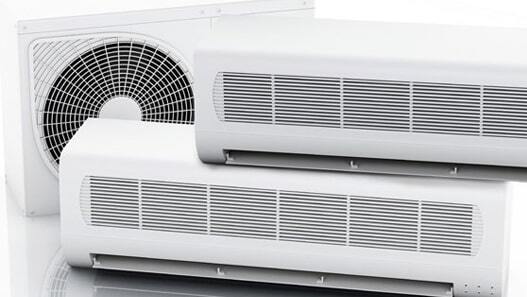The comfortingly chilly temperature that you choose might be too high for your children. Installing a multi-head split system air conditioner is a simple solution to the problem of people having different ideal room temperatures.
Air conditioners with multiple split zones are great for homes where members of the same household have varying temperature preferences. Each system has its own temperature control, allowing for easy cooling and heating of individual rooms.
Multi-head Split System Air Conditioner: Overview
A multi-head split system air conditioner is essentially an upgraded version of a standard wall-mounted split AC. This is due to the fact that a single outdoor unit may power many inside wall-mounted units. A multi-split air conditioning system allows for several inside units to be linked to a single, highly effective outside compressor.
If you just use one inside unit, the outside unit may work at a considerably greater capacity, resulting in faster cooling in a shorter amount of time and less energy use.
The incredible installation flexibility, space-saving design options, and increased energy savings make this kind of air conditioning a perfect option for households with restricted living space. Although it may seem sophisticated, a multi-head split system air conditioner is really a very practical and easy-to-use method of heating and cooling a large space.
In a multi-split system air conditioner, two or more inside units are linked to a single outside unit by means of refrigerant lines, power cables, and condensate drain lines; this eliminates the need for a complicated duct system.
The technique used here is identical to that of a conventional air conditioning unit installed on a single wall. In the summer, it draws hot air from inside and routes it to a fan coil, where it’s cooled down before being pumped back into the home. To heat your home in the winter, it switches to a reverse cycle and operates in the other direction.
A heat pump and inverter technology work together to efficiently cool and heat the air with little power use. Each room’s temperature may be automatically adjusted thanks to the use of sophisticated sensors.
Multi-head Split System Air Conditioner Advantages:
The use of a multi-split system air conditioner has various advantages. We have listed some of the benefits, such as having full control over the units and requiring less physical space.
· Great for Family Houses:
Having the ability to link many indoor units to a single outdoor unit makes multi-head split systems ideal for bigger houses. If you buy the right air conditioner, you may hook up as many as eight individual interior units to a single outside condenser.
· They Help You Save Room:
Since just one outside unit is required, you may free up a lot of room in the yard. Having fewer outside units is also a cleaner option.
· Every Device has its Own Control Panel:
The fact that the temperature of each interior unit may be adjusted independently is a remarkable feature of multi-head split system air conditioning. Furthermore, the units do not have to be operating simultaneously.
· Versatility and Ease of Use:
The interior units of a multi-split system air conditioner are easily customized to meet the cooling needs of any given room in the home. With just one outdoor condensing unit, you can cool a big living room with a high-capacity model while keeping bedrooms cool with smaller, quieter models. You can regulate the atmosphere and temperature in each individual room.
Multi-head Split AC System Installation:
The installation of a multi-head split system air conditioner should be handled by trained technicians. Air multi-split system air conditioners and other types of air conditioners need expert installation since they contain refrigerant gas that depletes the ozone layer.
In each room, place the indoor air outlet device as near to the ceiling as feasible. Louvers should be pointed straight out or slightly inclined up to maximize cooling effectiveness since cold air is heavier than heated air. Turn them down low to warm the space.
The placement of the outside compressor unit requires some thought. In a perfect world, it would be fixed on a solid surface, such as a concrete slab, or secured to a wall with strong brackets, be shielded from direct sunlight, and be mounted. Furthermore, it has to be put in place as near as feasible to the interior air outlets. In order to get the pipe from the outside unit to the inside air outlet, larger and multi-story residences may need more than one outdoor unit.
Cost of Installing a Multi-head Split Air Conditioning System:
Multi-split AC systems have a greater installation cost than a single-wall split air conditioner but a lower cost than a duct system. Putting in indoor units (2-5) all throughout your house necessitates a longer pipe run and more labor.
You must realize that a multi-head split system AC should only be installed by a certified air conditioning installer.
Do I Need A Multi-head Split System Or A Multi-Split System Air Conditioner?
Understanding your demands and budget is essential when purchasing an air conditioner since there are so many options out there. If you need to cool more than one room but have limited square footage, a multi-split AC may be your best option.
You may also control the temperature in each individual room. If you don’t have the money or room for a ducted system, this is a great alternative. But maintenance is also very crucial as AC can face various problems over time. If you’re having any Aircon problems, you should contact Socool.
They are knowledgeable in diagnosing and fixing various issues that may arise with air conditioning systems, including installation, repair, and maintenance.

